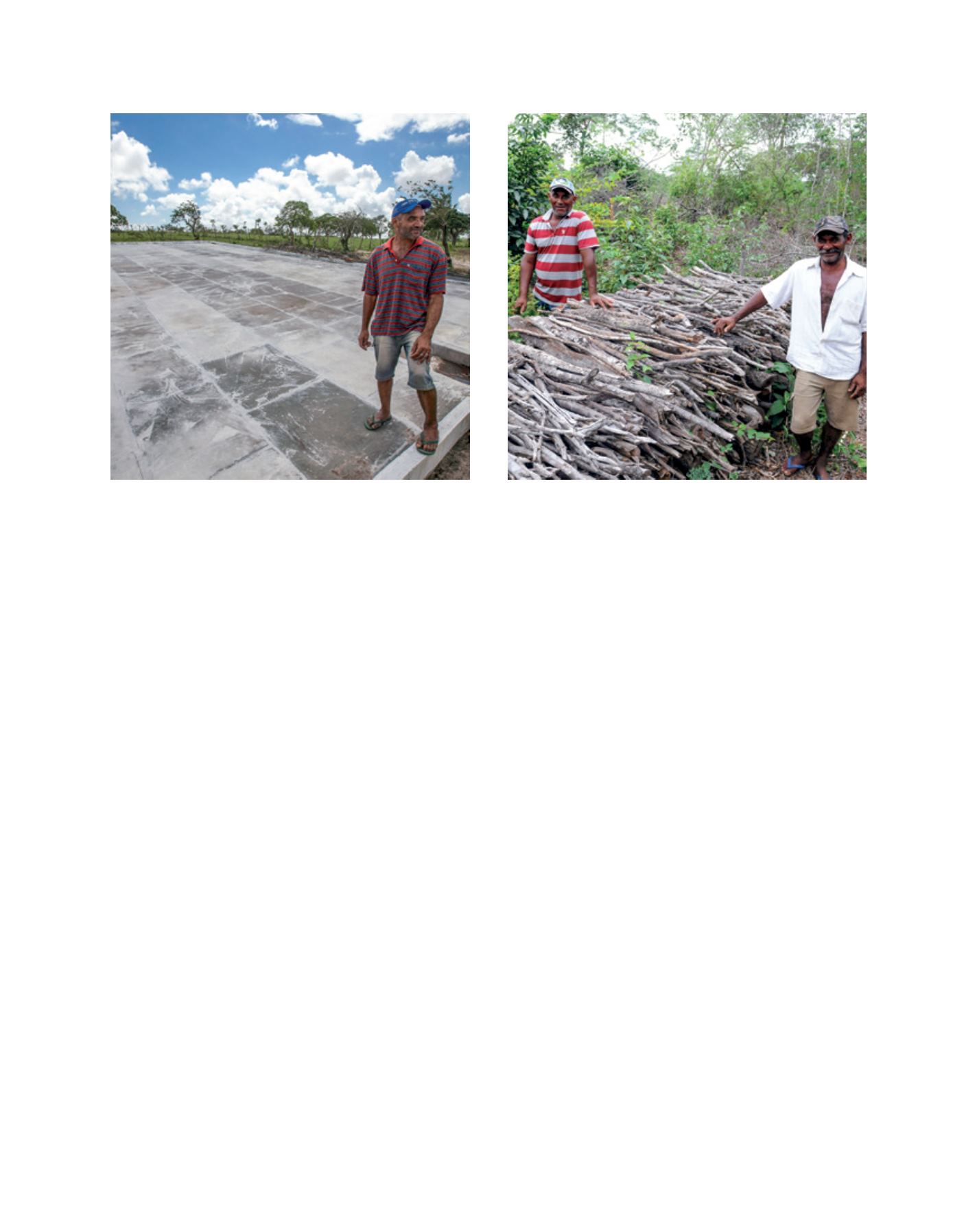

[
] 35
that goal. In 2011, the Brazil without Extreme Poverty Plan
was released to further promote social rights.
In recent years, small farmers in the semi-arid area have
benefited from nationwide policies that are designed to
facilitate domestic market access to agricultural products.
One is the Food Purchase Programme (PAA), through
which the Government purchases food produced by family
farmers and distributes it to people in areas of nutritional
insecurity. PAA also contributes to the formation of public
stocks of food produced by family farmers. Furthermore,
the programme strengthens local and regional commercial
networks. It also values organic food production, encour-
ages healthy eating habits and fosters cooperatives and
associations. Today, the semi-arid population is better
prepared to face prolonged droughts with low to no migra-
tion to cities, hunger or unemployment. The consolidation
of these new public policies, which combine overcoming
extreme poverty and adaptation to climate change, will
bring progressively more positive results. During the
more favourable seasons, the families can improve their
productive assets so that they are better suited to resist the
expected periods of hydric crisis.
Case study: security for small farmers
José Nilvaldo and Maria Aparecida dos Santos raised four
children on their small farm in rural Areal, State of Paraiba.
They are beneficiaries of the Bolsa Família and made their
own water cistern for drinking water. In 2013, with funds
from the Brazil without Extreme Poverty Plan, the family
could also count on the ‘cisterna calçadão’ (pavement
cistern). The calçadão cistern captures rainwater on a 200
m² paved surface. Surrounded by a curb, the construction
is made on a slope. Water is fed to a settling box and then
to the reservoir which can store 52,000 litres. Covered and
closed, the cistern is protected from contamination caused
by animals and evaporation.
The improvement in production, made possible by irriga-
tion, opened other opportunities for income generation. The
couple is part of an association of agroecological farmers
which sells their production to the Federal Government’s
PAA. The programme buys food from family farmers and
provides for people in situations of vulnerability. In 2014,
the family received US$3,000 from sales to the PAA. The
product of their work, organic and locally harvested food,
was used in school meals. “I am happy that my children
do not go hungry as I did,” Aparecida recalls. In the past,
they had to walk 12 kilometres to get water to drink.
“There were times when I would leave at 4 a.m. and would
return around noon.” Nilvaldo says that “Today, I eat meat
every day. In the past, the poor people only ate meat on
Sundays”. On the property, they have 24 kinds of agricul-
tural products, and breed geese, turkeys, chickens and pigs.
The family also has its own bank of native seeds. Working
in partnership with the Brazilian Semi-Arid Articulation
non-governmental organization (NGO), the Brazilian MDS
supports community seed banks on several farms in the
region, including in Areal.
Forest management
As part of its policies related to the sustainable use of forest
resources, Brazil has been promoting programmes to foster
community and family forest management. Those contribute
to job and income generation in rural areas.
This set of benefits is essential to the conservation of water-
sheds in ASDs. Sustainable forest management, coupled with
the legal protection of forests — Legal Reserve and Permanent
Preservation Areas — enables a community to maintain forest
cover over 50 per cent of its total area. The combination of
José Nivaldo with the pavement cistern, built with funds from the Brazil
without Extreme Poverty Plan
Brazil has been promoting programmes to foster community and family
forest management
Image: Mr. Ubirajara Machado
Image: Paulo Araújo - ASCOM/MMA
L
iving
L
and
















